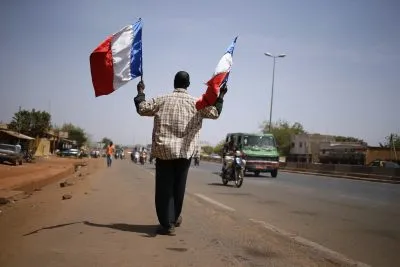For Alioune Ndiaye, chief executive of Orange Middle East and Africa, and a telecoms veteran since the 1980s, the past few months have presented a challenge to rival any seen in the industry’s recent history.
“This pandemic has had a tremendous impact on our lives, on our jobs, on our families and activities – it’s impossible to overstate how much change we’ve had to withstand since March,” says Ndiaye.
As the coronavirus hit the company’s 18 markets throughout the region, businesses and customers facing lockdowns and home-working sparked a huge increase in data use, putting a strain on the operator’s mobile and fixed broadband infrastructure.
“Some of our countries have seen data traffic increase by 60% in only one or two weeks, usually during the lockdowns, and this has put our mobile and fixed networks under some stress, but thanks to all our previous investments we could withstand the sudden increase with almost no decline in quality or availability of our services, and this could explain why we’ve been resilient in our financial results,” he says.
While the pandemic has buffeted corporates across the continent, Orange Middle East and Africa revenues grew 3.8% year-on-year in the first half of 2020 to €2.8bn ($3.3bn) and earnings before interest, taxes, depreciation, and amortisation rose by more than 7%. The regional performance was driven by a 40% increase in 4G customers year on year to 27.9m, by broadband, and by mobile money service Orange Money.
“Data usage by mobile phones has nearly doubled in a year. There were three phases – acceleration in the second quarter, more stable progression in the third quarter and a renewed progression from September,” says Ndiaye.
Data revenue grew by 26% in the second quarter, while home working contributed to the number of fixed broadband customers increasing 31% year-on-year to 1.4m, enabling fixed broadband revenue growth of 33% in the second quarter. Yet adapting to this surge in demand has been an immense technical challenge for Orange, says Ndiaye.
Annual infrastructure investments of €1bn helped it to withstand the pressure at the height of the pandemic, but the firm has had to further boost its technology and work more closely with the US tech giants who account for the majority of its traffic.
“The huge increase in traffic was mainly on Google and Facebook content, so we had to work closely with these players in order to better control the impact on our networks. This rapid increase in international capacity also had to be implemented on submarine routes in Morocco and Jordan, and we also increased our capacity on satellite in the DRC and Central African Republic. Some data network cores had to be resized and we did this in Jordan, Morocco and Senegal.”
As well as improvements to physical infrastructure, Ndiaye also had to oversee an operational restructuring as Orange attempted to meet customer demand while adapting to remote working and new in-country regulations.
“We set up a crisis committee in each country chaired by the CEO of the operation in the country. We also updated our national business continuity plans to comply with new requirements. We cancelled all seminars and events and used barriers in physical workspaces and changed to digital modes where possible. The entire ecosystem of our operations had to adapt – this crisis has really exceeded in its form and scope the working hypothesis we had until now.”
Data consumption and mobile money fuel growth
As well as thrusting the telecoms sector to the fore as a critical communications medium for governments and citizens, the pandemic is accelerating industry trends that have long been brewing in Africa, including increased data consumption and smartphone ownership, widespread mobile money adoption and the installation of broadband for homes and businesses. Orange is positioning itself to capitalise on these shifts, says Ndiaye.
“Our digital portals show traffic increased by 40% and data usage by business customers went up in many of our countries. We have started reflecting on the impact of the crisis, particularly the increase in teleworking for companies and employees, most clearly formulated in the widespread demand of B2B customers to increase the flexibility of the office and adapt to the uncertainties inherent in this crisis. This reflection could lead us to keep the traffic going, going forwards.”
Nowhere is this acceleration more evident than in mobile money. Orange Money’s active customer base totalled 19.6m by June 30, having registered 18.9% year-on-year growth as governments encouraged citizens to avoid physical cash. Revenues for the service grew 12.5% in the second quarter of the year.
Orange is planning to build on this momentum through this year’s launch of Orange Bank Africa, which will work with Orange Money to offer a range of savings and microcredit services which will allow customers to borrow as little as CFA5,000 ($9) using their mobile phone.
The bank aims to attract 10m customers and €100m in net banking income within 5 years. The first commercial launch will be in Côte d’Ivoire before branches open in Senegal, Mali and Burkina Faso, subject to approval from BCEAO, the region’s banking regulator.
“We are relying on growth levers like mobile money and banking,” confirms Ndiaye.
Boosting subscriber numbers
One barrier to mobile money expansion is the scarcity of smartphone usage on the continent even as networks extend to previously underserved areas.
“In Africa today you have 70% of the population covered by mobile broadband networks. Even though they are covered by the network, 520m remain non-internet users for reasons such as affordability and low levels of literacy and digital skills. The average cost of an entry-level smartphone in Africa still exceeds 60% of average monthly income,” says Ndiaye.
In September, Orange, in conjunction with Google, announced the launch of the Sanza touch smartphone – a $30 device which it claims is the most affordable 4G Android device globally. It will be sold in most countries in the Middle East and Africa region, starting with Guinea Bissau, Côte d’Ivoire and Madagascar. The hope is that it will boost smartphone uptake in underserved areas and boost Orange customer numbers in the region, which amount to around 123m.
Another focus of these efforts will be expansion beyond its existing 18 markets, with Ndiaye particularly eager to gain a foothold in Ethiopia, a country of more than 112m from which private operators have long been barred.
Under prime minister Abiy Ahmed, that finally looks set to change, but the privatisation process has been slowed by the impact of the pandemic and regional tensions within Ethiopia. Nevertheless, Ndiaye sees the market as a crucial frontier as Orange looks to boost users beyond the pandemic.
“We’re looking with great interest at the opportunity afforded by the ongoing reform of the Ethiopian telecoms market initiated by the Ethiopian government. We’re still waiting for the request for proposals. According to the authorities the candidates will have to bid at the latest at the beginning of 2021 for the two new licences. Ethiopia is a very important target for us.”
Read more from our special report on African telecoms.
Want to continue reading? Subscribe today.
You've read all your free articles for this month! Subscribe now to enjoy full access to our content.
Digital Monthly
£8.00 / month
Receive full unlimited access to our articles, opinions, podcasts and more.
Digital Yearly
£70.00 / year
Our best value offer - save £26 and gain access to all of our digital content for an entire year!
 Sign in with Google
Sign in with Google 



